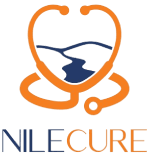
Dermabrasion is a cosmetic procedure that involves the mechanical exfoliation of the skin’s outermost layers using a specialized instrument or device. It is typically performed to improve the appearance of skin imperfections, such as fine lines, wrinkles, acne scars, uneven pigmentation, and sun damage. During the dermabrasion procedure, a dermatologist or trained skincare professional uses a rotating abrasive tool, such as a wire brush or diamond-tipped wand, to gently remove the top layers of the skin, revealing smoother, rejuvenated skin underneath.
Here’s an overview of the dermabrasion procedure and its benefits:
1. Procedure Process: Dermabrasion is usually performed in a dermatologist’s office or medical spa setting. Before the procedure, the skin is thoroughly cleansed, and a topical numbing cream or local anesthesia may be applied to minimize discomfort. The dermatologist then uses the dermabrasion device to carefully abrade the skin’s surface in targeted areas, paying close attention to areas of concern. The depth of abrasion can be adjusted based on the severity of the skin condition being treated.
2. Benefits: Dermabrasion effectively removes damaged or dead skin cells from the surface, promoting cell turnover and collagen production. This results in smoother skin texture, reduced appearance of wrinkles and fine lines, and improved skin tone and clarity. Dermabrasion can also help diminish the visibility of acne scars, hyperpigmentation, age spots, and sun damage, revealing a more youthful and radiant complexion.
3. Recovery: Following dermabrasion treatment, the skin may appear red, swollen, and sensitive, similar to a sunburn. Patients are advised to follow post-procedure care instructions provided by their dermatologist, which may include applying soothing ointments or moisturizers, avoiding sun exposure, and gently cleansing the skin. As the skin heals, new, healthy skin cells replace the exfoliated layers, resulting in gradual improvement in skin texture and appearance.
4. Results: The results of dermabrasion treatment are not immediate and may require multiple sessions to achieve the desired outcome, depending on the severity of the skin condition being addressed. Over time, patients typically notice smoother, more radiant skin with diminished wrinkles, scars, and pigmentation irregularities. Maintenance treatments may be recommended to prolong the results and maintain optimal skin health.
5.Suitability: Dermabrasion is generally safe for most skin types and tones, but it may not be suitable for individuals with certain skin conditions, such as active acne, eczema, or rosacea, or those with a history of keloid scarring or skin infections. It’s essential to consult with a qualified dermatologist or skincare professional to determine if dermabrasion is the right treatment option for your specific needs and concerns.
Overall, dermabrasion is a versatile and effective cosmetic procedure for improving the appearance of various skin imperfections and achieving smoother, more youthful-looking skin. By exfoliating the skin’s surface and stimulating collagen production, dermabrasion can help restore a healthy, radiant complexion and boost self-confidence.

